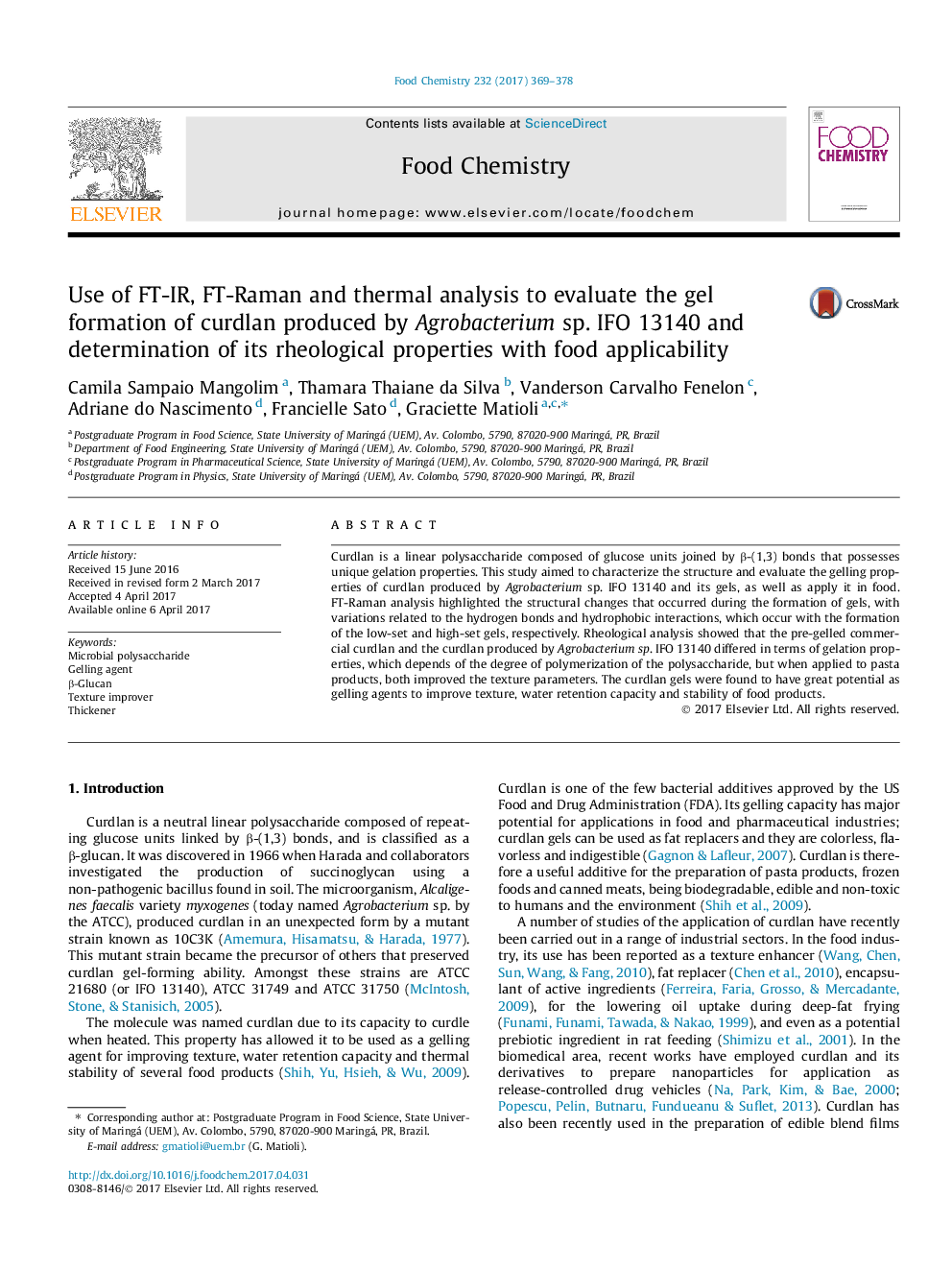| Article ID | Journal | Published Year | Pages | File Type |
|---|---|---|---|---|
| 5133417 | Food Chemistry | 2017 | 10 Pages |
â¢FT-Raman allowed the identification of mechanisms of formation of curdlan gels.â¢Thermal analysis evidenced the temperatures for curdlan gels formation.â¢Curdlan produced by Agrobacterium sp. IFO 13140 has major potential as a thickener.â¢Stable and rigid curdlan gel displayed potential for application in food.â¢Curdlans improved the texture parameters of pasta products.
Curdlan is a linear polysaccharide composed of glucose units joined by β-(1,3) bonds that possesses unique gelation properties. This study aimed to characterize the structure and evaluate the gelling properties of curdlan produced by Agrobacterium sp. IFO 13140 and its gels, as well as apply it in food. FT-Raman analysis highlighted the structural changes that occurred during the formation of gels, with variations related to the hydrogen bonds and hydrophobic interactions, which occur with the formation of the low-set and high-set gels, respectively. Rheological analysis showed that the pre-gelled commercial curdlan and the curdlan produced by Agrobacterium sp. IFO 13140 differed in terms of gelation properties, which depends of the degree of polymerization of the polysaccharide, but when applied to pasta products, both improved the texture parameters. The curdlan gels were found to have great potential as gelling agents to improve texture, water retention capacity and stability of food products.
